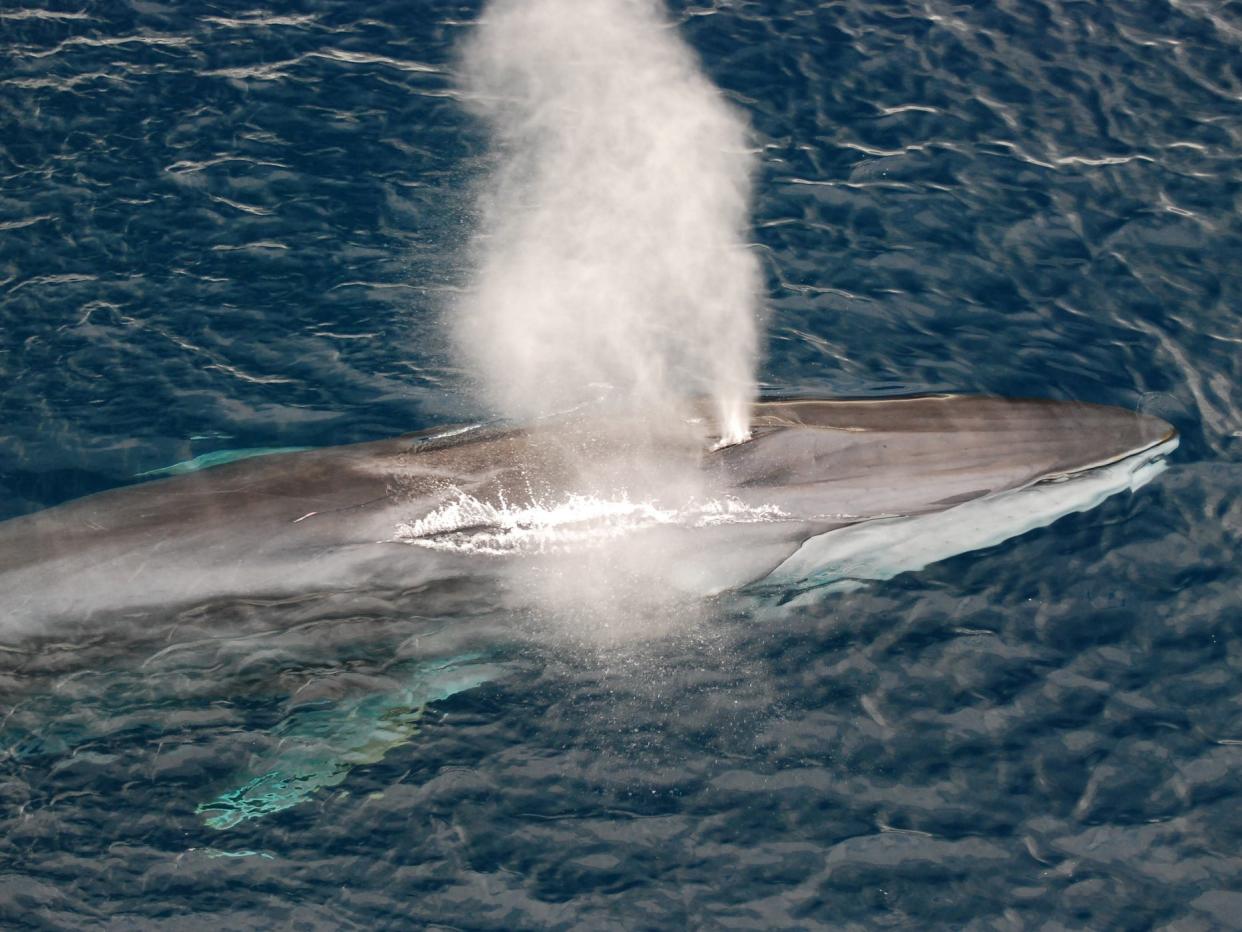Fin whales pick up new songs while migrating and bring them back to local populations, study suggests

Male fin whales pick up new songs while on their travels, and then sing them to all their friends, new research suggests.
The second-largest creature in the world after the blue whale, the fin whale was previously believed to only sing one (very low pitched) song pattern per group.
But this theory “has been blown out of the waterâ€, by a new study that used a network of hydrophones (underwater microphones) to detect fin whale vocalisations, and triangulate the whales’ location thereby allowing researchers to track how different song patterns were repeated around the ocean.
“Male fin whales in the Pacific sing just two very low notes, which are produced in different rhythms to create song,†said Dr Tyler Helble of the Naval Information Warfare Centre Pacific.
“Previously, some marine mammal scientists thought that fin whales each sang a single pattern of notes, which was found only within their specific group and region. Our research indicates that fin whale song is more complex than this.â€
The study found the endangered species actually sing multiple different songs, which may spread to different parts of the ocean by migrating individuals.
“When a new whale song is recorded in a region, researchers often read it as a signal that a new group or individual has arrived from a different part of the world,†said Dr Regina Guazzo also of the Naval Information Warfare Centre Pacific, who was among those carrying out the research.
“However, this study suggests that these new song patterns may have been picked up by a local whale on his migratory travels, in a process of cultural transmission between groups from different regions.â€
The team recorded the songs and locations of 115 whale encounters near Kauai, Hawaii over six years.
Dr Guazzo said: “The sound is recorded on multiple hydrophones, allowing us to triangulate on the signal and formulate a position for the animal. By showing that different song patterns were coming from the same location, we demonstrated that these were likely made by the same individual.â€
The research team said understanding the complexity of fin whale song helps humans gain better insight into how their populations move and change over time. This can help efforts to better protect the threatened species, which is listed as “vulnerable†by the IUCN.
“There is still a lot of uncertainty around the fin whale population size and structure in the North Pacific, and so learning about the song could help us understand population dynamics in this region much better,†said Dr Helble.
The deep bass song of blue and fin whales are the lowest-frequency sounds made by any animal.
Fin whales’ vocalisations are low pulses lasting one or two seconds ranging from 16 to 40 hertz frequency. Meanwhile the range of human hearing stretches from faint lows of down to 20 hertz, up to 20 kilohertz.
Whales have been known to repeat the same patterns of vocalisations in bouts lasting up to many days in length.
The research is published in the journal Frontiers in Marine Science.
Read more
Blue whale singing patterns predict migration, study finds
Still no cause for mass pilot whale stranding in Australia
Drone footage shows a great white shark drowning a 33ft humpback whale
Trump erupts in rant about 'Prince of Whales' and Queen of England


